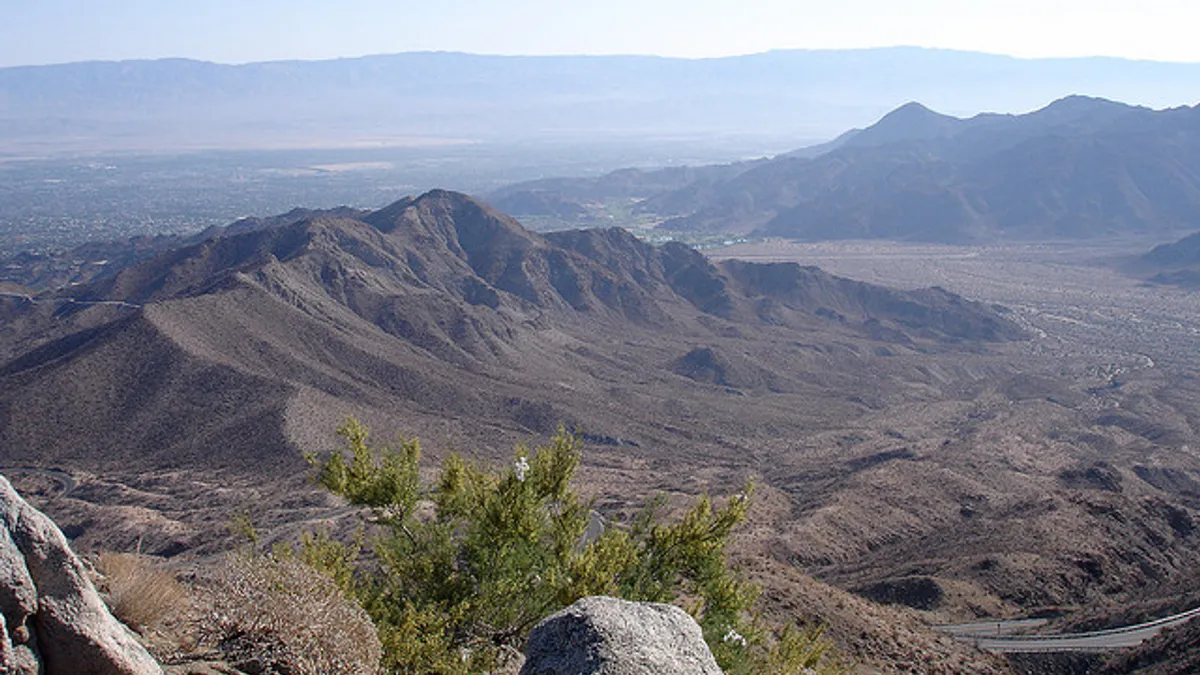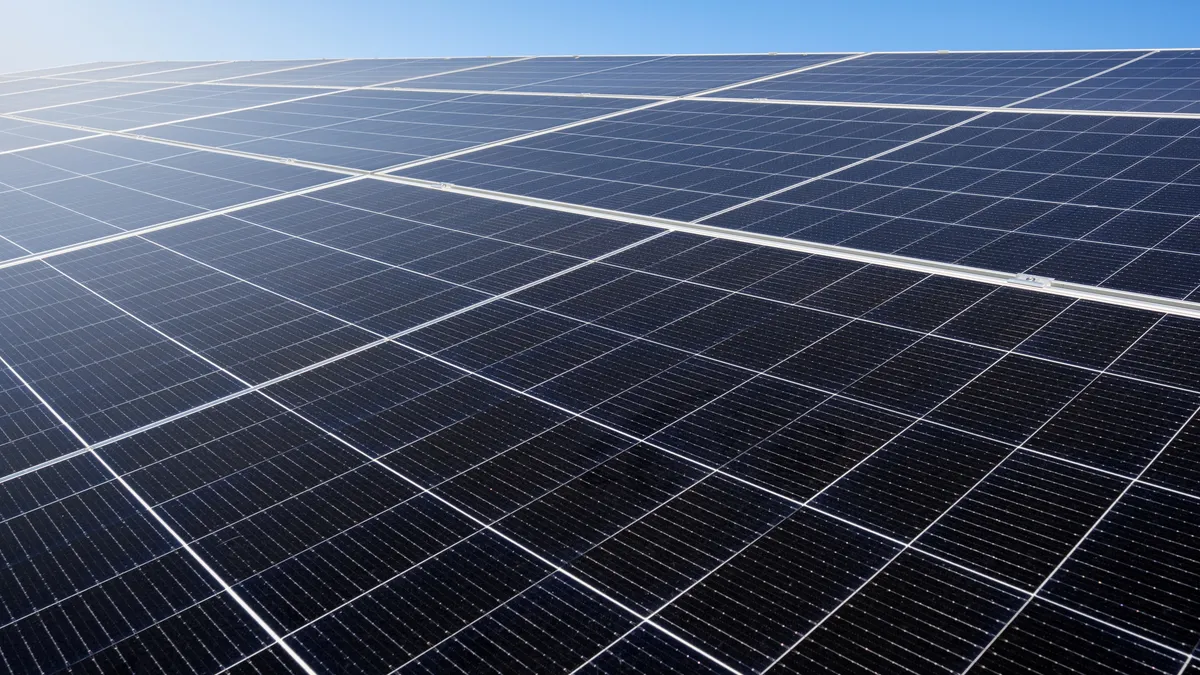The Bureau of Land Management (BLM) drew mixed reactions from the renewable energy industry after deciding last week to scrap amendments to a sweeping land use plan for the California desert proposed during the last days of the Trump administration.
The Desert Renewable Energy Conservation Plan (DRECP), the first phase of which was finalized in 2016, covers roughly 10.8 million acres of the California desert region. The plan, conceived during the Obama administration when federal incentives for renewables led to a growing interest in the region, carves out certain portions of the desert for renewables development, while earmarking others as off limits.
In January, the BLM under former President Donald Trump's administration issued a draft proposal that would have effectively opened up an additional 800,000 acres of the desert for renewable energy development, with the broader aim of promoting economic growth and allowing more flexibility to meet energy needs. But the new Biden administration reversed course on this plan last week, announcing that it will not move forward with a review of proposal changes to the DRECP — a move that was cheered by conservationists, but prompted concerns among some in the renewables industry that it could threaten California's clean energy goals.
"I do think we're in for a rude awakening at some point, that we simply have put too much land off limits," Nancy Rader, executive director of the California Wind Energy Association (CalWEA), said.
"It really, really worries me that we're not going about this correctly, and if we don't correct this, we're not going to meet our climate change goals," she added.
The DRECP was developed by the BLM along with the California Energy Commission, California Department of Fish and Wildlife and U.S. Fish and Wildlife Service through a years-long process, and carved out more than 800,000 acres of land for potential renewable energy development. This included 388,000 acres of "development focus areas" — regions that the agencies categorized as having substantial potential for energy development and transmission access, which they believe could support around 27,000 MW of renewable energy capacity. In addition, it earmarked nearly 500,000 acres where renewable energy development could be considered either with or without a plan amendment, but would not be prioritized.
The amendments proposed by the BLM under the former administration would have modified those allotments, reducing the areas flagged as national conservation lands by around 2.2 million acres, and areas flagged as having "critical environmental concern" by around 1.8 million acres. The proposal was widely criticized by conservationists. But it also roughly doubled the area open for renewables development, Rader explained, "so we were very excited to see that."
In the statement announcing its intention to formally revoke the comment period on the possible changes, the BLM noted that the original plan was developed after years of stakeholder outreach.
"The Trump administration's proposal in its final days to re-open the plan is unnecessary and at odds with balanced land management," Laura Daniel Davis, principal deputy assistant secretary of land and minerals management at the agency, said in the press release.
Environmental organizations largely saw the move as a win, because the Trump administration's move to change the conservation designations "basically goes right to the heart of the plan," Helen O'Shea, director of renewable energy at the Natural Resources Defense Council's land division, explained.
"They were basically looking at peeling back protections and making land available to potentially all kinds of development — and that would have been really disastrous in terms of the long term conservation of the desert," O'Shea added.
The decision was also praised by California Energy Commissioner Karen Douglas.
"[It] means these valued public lands will continue to be protected while ensuring renewable energy projects needed to achieve California's 100 percent clean electricity target can be developed responsibly," Douglas said in a statement.
'The last frontier for wind development in California'
But some in the renewable industry are disappointed that the new administration did not explore the possibility of amending the plan. CalWEA, for instance, saw the amendments as an opportunity to "course correct," and open high-quality wind areas in the desert for exploration and potential development, which would be subject to the usual regulatory processes, according to Rader.
"There has been zero development since the DRECP was finalized and along the way, a dozen or so projects were killed — so it really had a terrible deleterious impact on wind energy development [in] really one of the last remaining areas of significant potential in California," Rader said.
And finding other locations to site wind projects in the state isn't necessarily easy, according to Rader, especially since high-quality private lands have already been developed.
"It's kind of the last frontier for wind development in California. There's a little here and there that folks are pursuing — we hope we can get a couple thousand more megawatts out of California — but we really need more than that," she said.
The California desert is particularly significant to renewable energy development in the state because it comprises large, undeveloped swaths of land managed by a single agency — whose mandate is to balance both conserving and using the resources on the lands it covers — in a state where a lot of private land is already developed, according to Andrew Bell, managing partner at Bell Kearns, a law firm that focuses on land use and other laws around developing large-scale projects. Moreover, it's located close to load.
While the DRECP was portrayed as a compromise between environmental and renewable interests, only a small portion of the 10.8 million acres it covers was earmarked for development, he pointed out.
"Even if you accept that it's enough … there are a host of regulations that are imposed even within the areas of the DRECP that [are identified as] a good place for renewable energy development," he added.
There were some aspects of the proposed amendments — particularly reforming "conservation and management actions," that Bell says are worth considering.
"If the administration is serious about promoting environmentally responsible renewable energy development on federal lands, then there needs to be a more sophisticated response than just rejecting out of hand what was considered to be a creature of the Trump administration," Bell added.
Some stakeholders, however, don't see the DRECP as a huge stumbling block to renewables. While there have been questions regarding certain parts of the plan — for instance, whether the requirements for areas that were earmarked for renewable development were too onerous or impractical — regulators and some renewable developers were working to resolve those prior to the Trump administration's proposed changes, according to V. John White, executive director of the Center For Energy Efficiency And Renewable Technologies.
"There are issues still with the DRECP that some of the renewable industry folks have raised, particularly in how the mitigation requirements will work and the solar development zones — but these are manageable issues," he added.
Striking a balance between conservation and development
The broader question for some is how to balance the priorities of conservation and renewable energy development in California, as well as other parts of the country.
"[T[he biggest threat to habitat and to wildlife, in the west and in California as well, is climate change. And solar energy obviously is a way to decarbonize our electric system and try to slow down… the impacts of climate change," said Sean Gallagher, vice president of state and regulatory affairs at the Solar Energy Industries Association.
Categorical exclusions of the development of renewable energy in too many places will make it difficult to decarbonize the electric system, Gallagher added.
An important part of that equation is taking into account the climate benefits that renewable energy projects bring, according to CalWEA's Rader.
"We just have to avoid categorical prohibitions on development. We have to be able to study particular areas, and we have to be able to propose mitigations — and then, we have to look at the actual impacts of development, which I think are often exaggerated…" she said.
And some stakeholders think that figuring out this balance could have long-term implications for California's clean energy goals. If California is serious about addressing the climate crisis, the state needs to responsibly advocate for as much utility-scale wind and solar as it can get, because rooftop solar by itself will not solve the issue, Bell said.
"And a big part of that equation is going to be federal lands," he added.
NRDC's O'Shea agreed that striking a balance between development and conservation is an issue playing out all over the country, not just California. But at the same time, designating only specific areas for development is a basic tenet of land-use planning, and applies to renewable energy just as it would any other form of development, she said.
The DRECP itself was a complicated stakeholder process that included not just the renewable industry and environmentalists but many other parties as well, she noted — and while everybody probably got a little less than they wanted, that's often how these kinds of plans shake out.
"I understand that the renewable energy folks would have liked to probably push for some more areas dedicated for development. I'm sure there were a lot of conservationists who probably wanted to see even more protections. But at the end of the day, we got a plan that nobody litigated — which is almost unheard of for a land use plan of this scale and significance," she said.
Correction: a previous version of the story misidentified the aspects of the DRECP that Bell says are worth considering. He referred to "conservation and management actions."























